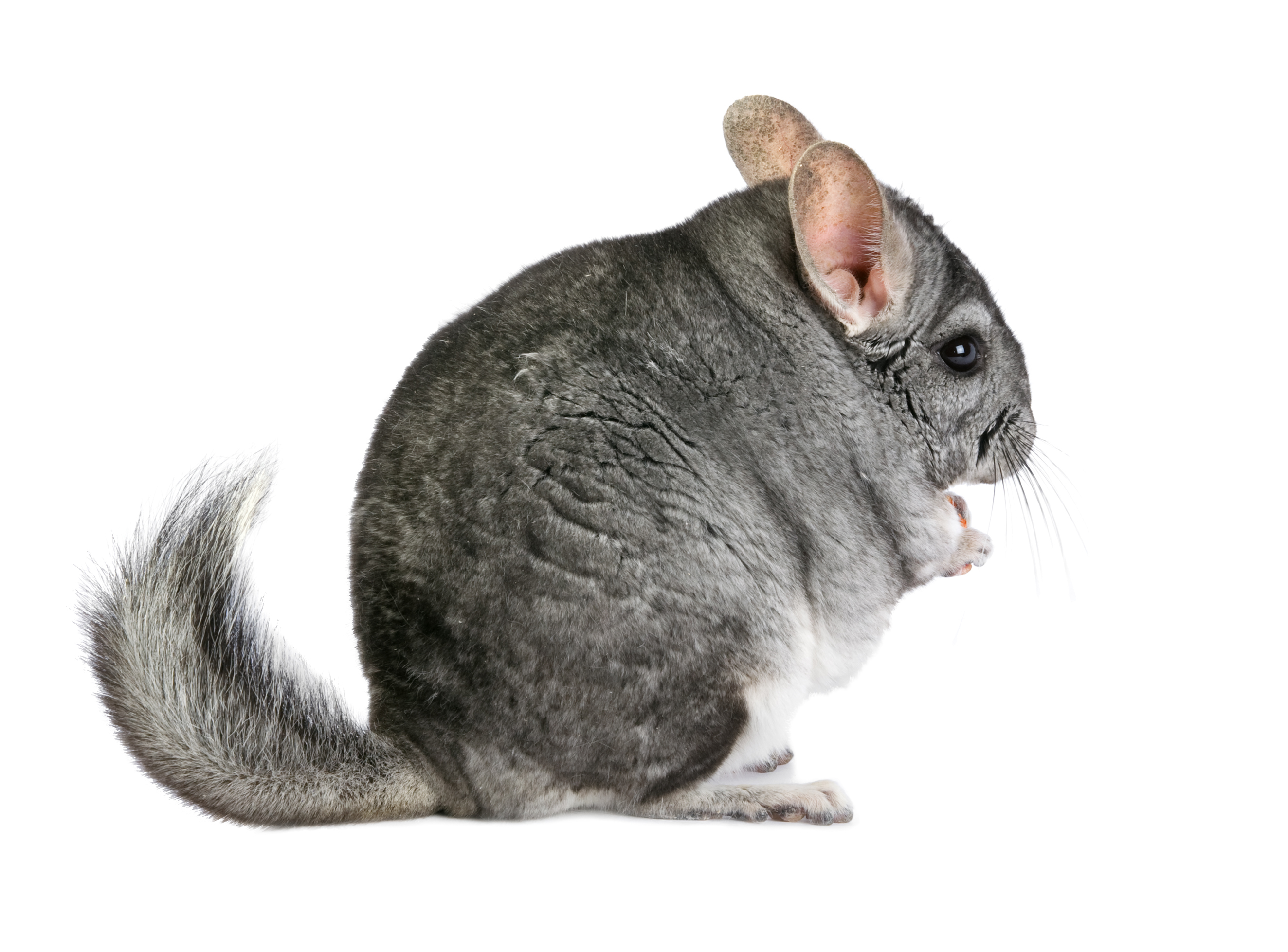Chinchillas and traditional baths are like oil and water. Literally. Your chinchilla perfects her stuffed animal look and feel by packing in 80 or so hairs to every follicle. Overachievers, some would say. When such a dense coat becomes wet, it understandably can create an uncomfortable, compact mess. A wet chinchilla doesn't dry at any sort of reasonable rate. This can lead to a chilly chin that contracts a respiratory infection, or a host of skin issues like a fungal infection. And this is why chinchilla dust baths are the answer to keeping your animal clean.


Rub-A-Dub-Dub, No Chins in the Tub. Only Chinchilla Dust Baths. (Please.)
She's not a witch in disguise. She won't melt. However, when a chinchilla's dense fur gets wet, she can become quite chilled. Because they take so long to dry, even on a nice day, this can create a cold chin that's set up for a respiratory infection.
Upper respiratory infections in rodents shouldn't be taken lightly. Unlike a simple cold in humans, respiratory infections can quickly turn into something more serious, like pneumonia. Small animals also are at risk for other complications, like GI stasis from refusing to eat when not feeling well.

A damp coat can also cause problems with the skin and fur itself. Fungal infections are just as fun as they sound. Moisture trapped in a chinchilla's undercoat creates an environment where fungus can thrive. Ringworm, usually to blame for fur fungus, isn't species-specific. Yep, this is the same headache that plagues dogs, humans, and spreads to other animals.
Over the counter medications do not technically "kill" fungus either (although they stop it from growing, so over the course of several weeks the immune system can kick it to the curb).
Too Late?
Don't panic. Plenty of chins are messy drinkers or forget their manners and spray their pals with urine and everyone still lives happy and healthy lives. Sometimes accidents happen and nothing but a damp cloth to the surface of the coat will solve the problem. A soaking wet chinchilla isn't advisable, but if you find your buddy a bit damp all is not lost. It's damage control time.

Dry her off with a towel first and use a no-heat blow dryer or the low-heat setting held around 
To prevent damp chinchillas in the future, swap drinking bowls for sipper bottles and supervise playtime for those get-into-everything types. Be sure to clean out the cage and sleeping areas often to control both moisture and odor.
Just Add Dust
No amount of cute can stop stink (probably what they're thinking about us, too). But all hope is not lost. Not only is there a healthy alternative for bathing chinchillas, but it's actually vet-recommended.
Chinchillas instinctively enjoy taking dust baths and it will keep their skin and coat healthy and fresh. It's also an adorable sight to watch... win, win, win! The dust is meant to mimic the volcanic ash chinchillas would use in the wild to remove dirt and oil from the floof (highly technical term).
Chinchillas shouldn't be bathed in water to avoid fungal infections and other health issues. Luckily, they're generally self-cleaning machines and don't need too much help to stay fresh and soft. Just provide the dust in a safe bath hut for 10 minutes or so a few times a week. They'll enjoy the fun, and you'll enjoy the cute! Now get to YouTube and enjoy some chinchilla dust baths... they're totes adorbs. And after the bath, let them play in their cuddle pod. Even more totes adorbs.





